Priča o Jednoj Lopti by Marta Huber: Story of First Football in Croatia
February 15, 2023 - In the packed hall of the Multicultural Centre in Županja, there was a promotion of a special picture book, an educational museum publication for children and young people, "Priča o jednoj lopti" by Marta Huber.
As Glas Slavonije writes, Marta is a curator at the Regional Museum, and her book is about the first time football was played and the first time a ball was even held in Croatia. It is about a segment of the past of the city on the river Sava, about the time from the end of the 19th and the beginning of the 20th century, when industrialists from England arrived in Županja and built a tannin factory there because of the rich oak forests. And with the English, the first football arrived. The picture book tells the story of love between the industrialist Fred and Šokica (traditional local lady) Katarina, as well as the story of life in a Slavonian village about a hundred years ago.

The promotion guests were greeted by Hrvoje Tkalac, director of the "Stjepan Gruber" Museum, asserting that his colleague Marta had decided to show the city's past in a charming way with her excellent work. The author of the afterword, Katarina Bušić, museum advisor from the Ethnographic Museum in Zagreb, said that, both as a museum worker and as a Županja native, she is proud of the local team that decided to prepare a picture book, the first museum publication of its kind in Croatia. The story is told in a straightforward, understandable, and suitable way for children, providing a lot of data and information. She concluded that this small, truly local picture book contains all the topics a story must have. Nothing in it is made up; all the events really happened in Županja.
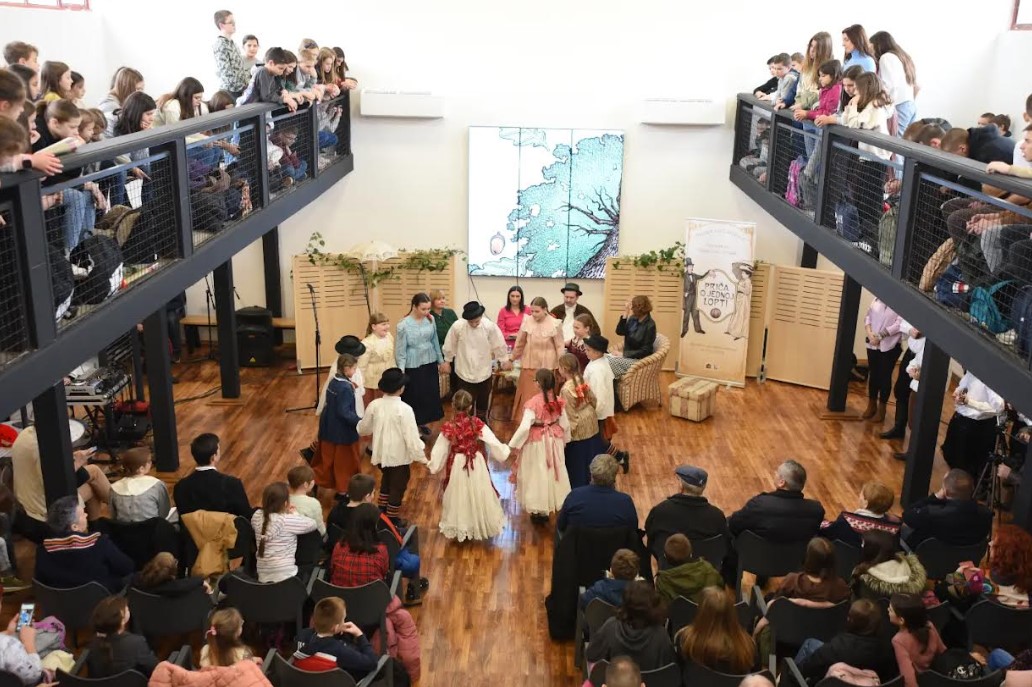
The collaborator on the picture book, professor Katarina Berać Vuić, is the author of the glossary that appears on each page, as well as the quiz at the end of the picture book. She presented the picture book through a conversation with Marta Huber and academic painter Mislav Lešić - Đurakov. The author admitted that she had been carrying the idea of writing for a long time. In the Museum, she often meets kindergarten and school children, so she tries to adapt the historical narrative for their age. She thought that with good visualization, all the events, years, and circumstances would be more understandable to children. She succeeded in this, thanks to vivid illustrations with a multitude of local natural and ethnographic peculiarities and details hidden on the pages, which were brought to life by Mislav. Congratulating the authors, an excerpt from the picture book was read by Mayor Damir Juzbašić at the end of the promotion.
The book can be purchased in the Stjepan Gruber Museum in Županja.
For more, make sure to check out our dedicated Lifestyle section.
Media in Time Festival in Vinkovci to Award Best Local Journalists
September 2, 2022 - The 3rd Media In Time journalism festival organised by the Center for Media Culture in Vinkovci is starting today with a panel discussion on the topic "Small" media, big topics".
As Press 032 reports, the festival in Vinkovci will carry a central theme dedicated to local journalism and the doubts and problems that exist in the local media when opening of certain topics, from problems with sources to attempts at political and other pressures and distractions, which sometimes come from their own employer and editorial staff.
The central part of this year's Media In Time festival will be the awarding of the Croatian Journalists' Association (HND) awards for the best local journalistic works, which bear the names of two exceptional Croatian journalists, Anđelko Erceg and Siniša Glavašević, and the Media In Time journalism festival will be the permanent venue for their awards in of the future.
These are the newly established awards of the Croatian Journalists' Association, which are intended to recognise journalists who self-sacrificingly and professionally do their journalistic work in local media, and who know how to remain in the shadow of their colleagues who deal with topics of national importance. It can be pointed out that the laureates are journalists from Dubrovnik to Vukovar. The award ceremony in the lapidary of the Vinkovci City Museum will be broadcast live on HND's Facebook and YouTube pages.

HND
After awarding the award for the best local journalistic works, the opening ceremony of the exhibition "Franjo Fuis: from comics to theatre and film and back" by Veljko Krulčić will follow, which will be staged in the gallery of the City Theater of Jotza Ivakić as part of the collaboration between the Media In Time festival and Fra Ma Fu festival of Reporting and Reporters of Virovitica and Daruvar.
HND adds that on the second day of the festival, September 3, the program continues in Vukovar with a lecture by communication and media expert Tomislav Levak, a lecturer at the Academy of Arts and Culture of the Josip Juraj Strossmayer University from Osijek on the topic "How and why is misinformation and fake news produced and spread?". The panel discussion "Fake news – how to fight it" will follow, which will be opened with a presentation by a young computer scientist from Vinkovci, David Buday, an expert in OSINT (open source data), on finding information from publicly available sources.
In addition to Croatian journalists, the participants of the 3rd Media In Time festival will also be the president of the European Federation of Journalists and the Union of Croatian Journalists, Maja Sever, and the president of the Croatian Journalists' Association, Hrvoje Zovko, fellow journalists from Bosnia and Herzegovina and Serbia, as well as students from the Department of Culture, media and management of the Academy of Arts and Culture of the University of Josip Juraj Strossmayer from Osijek, with which the Center for Media Culture recently signed a cooperation agreement.
For more, make sure to check out our dedicated Lifestyle section.
Eventful September in Baranja - Over 15,000 Visitors Expected
August 24, 2022 - The Biggest Croatian Fish Stew Day, Fishing Days, Wine Marathon, and World Fishing Championship. September in Baranja looks eventful. Over 15,000 visitors are expected.
As Glas Slavonije writes, since the beginning of the year, more than 13,000 tourists visited Baranja, accounting for approximately 23,000 overnight stays.
The results are significantly better than last year, reaching the level of the record 2019. A real tidal wave of arrivals and overnight stays is expected during September when several events will be held in Baranja that have recently become famous outside of the county borders.
“Judging by the announcements, we expect about 15,000 visitors at the September events alone, mostly domestic, but with a respectable number of foreign visitors as well”, said Matej Perkušić, director of the Baranja Tourist Board, stressing that this should be felt in the occupancy of accommodation capacities throughout Baranja, but also in Osijek and its surroundings. It all starts with the Biggest Croatian Fish Stew Festival, which will take place in Beli Manastir on September 3. It is a "two in one" competition - the Croatian Championship, for the winners of the Slavonia-Baranja competition, and the amateur championship, for everyone else. In total, more than 200 chefs are expected.
“About 70 amateur chefs have applied so far, and we expect the majority of applications a day or two before the deadline, which is in less than a week”, said Perkušić. Along with several interesting games, the bands TS Žeteoci and Magazin will be in charge of entertainment.
The middle of September is reserved for another established Baranja event, Fishing Days in Kopačevo. Ten thousand visitors were there last year, and as many are expected this year as well.
“Last year, because of the pandemic, we decided that Fishing Days would be a three-day event, and it turned out to be a complete success. Therefore, this year they will be held on Friday, Saturday, and Sunday (September 16 - 18)”, said Željko Cickaj, mayor of Bilje Municipality, pointing out that visitors can expect between four and five tons of fish, to which the "gastro programs" must be added, organised alongside with the central part. In addition to local delicacies, guests will also be able to enjoy a cultural and entertainment program. On Friday, after the official opening, the band Gazde will play, followed by TS Kvinta in the tent. Saturday is reserved for The Garden, klapa Rišpet, and TS Nesanica (in the tent), and on Sunday there will be a traditional fish stew cook-off, several traditional music, and dance ensembles, and TS Sitan Vez will perform.
“Although this year there is a problem with acquiring the needed quantities, the members of the hunting club from Kopačevo started their preparations on time, so there will be enough fish” Cickaj pointed out.
And on the last weekend of September (Friday and Saturday), all roads will lead to Zmajevac, to its mountain paths and wine cellars.
“We expect that approximately 2,500 marathoners will “run” the marathon this year, possibly more. Applications started back in February. For example, the team from Hungary that participated in the marathon last year had six members. This year, they expanded the team to 73 members, for both days” on behalf of the organizer, the Surduk Association, said Kristijan Horvat. This year, the partner countries will be Hungary and North Macedonia. An interesting entertainment program awaits visitors. Although the dice are still “coming together”, Frajle, Hungarian violinist Nyari Bernardett, and Macedonian artist Tijana Dabčević will perform together on Friday. The arrival of Tamara Tadevska, who defended the Macedonian colours at the Eurovision Song Contest, is also planned. Concerts on two stages are planned for Saturday.
How good is your knowledge of eastern Croatia? Take the CROMADS test above - how many places do you recognise?
For more, make sure to check out our dedicated Travel section.
Vučedol Culture Museum Invites You to Out of the Box Virtual Exhibition
August 5, 2022 – The Vučedol Culture Museum in Vukovar remains a truly special place. Its unique location, architecture, and the dedication of those who make things happen there day after day, all keep drawing you back and leave you longing for more. This time, the invitation is out for all who like anything digital, 3D, and in general thinking out of the box. A new interactive exhibition nicknamed Vučedolac izvan okvira (The Vučedol Man Outside His Box) is open until the end of August.
Tportal followed up with the author of the exhibition, Darko Bilandžić, who is also the head of marketing at the Vučedol Culture Museum. He points out that, thanks to their approach to marketing and the possibilities of the digital world, he decided to offer the museum’s visitors a digital insight into the life of the prehistoric people of Vučedol.

Photo: Vučedol Culture Museum
“The people of Vučedol were advanced as a culture and in many ways ahead of many at that time. We could say that they thought outside the box. I believe that we have passed the time of static museums, which require visitors to walk through them and read the materials next to the exhibits. In addition to improving our website, we decided to go a step further and create an interactive exhibition using augmented reality technology”, says Bilandžić.
He explains that ten tablets are available to visitors, which they can use to scan ten posters to find the corresponding 3D, audio, text, or video content.
“With this type of presentation, we want to get even closer to the younger generation and keep up with the modern ways of presenting museum material, and thus further build our digital archive. I must admit that the feedback of our visitors pleasantly surprised me, as it clearly shows how important it is to continue working in the direction of new technologies”, says Darko Bilandžić.
He adds that even as a child he was interested in advanced technologies and that robots were his favourite toys.
“That passion for new and advanced technologies always stayed with me. Back in 2016, at the Vučedol Culture Museum, we had visitors take a virtual walk through the museum with the help of VR glasses”, he recalls.
He added that the “trigger” for greater involvement in the digital presentation of cultural material was the coronavirus pandemic when many museums were closed.
“It made apparent that a lot of museums were not ready for online work. We saw our chance there and I dove into learning and education, and this exhibition is the first result of that”, he says proudly, adding that without digital technologies in the future it will be difficult to imagine the operation of any museum.
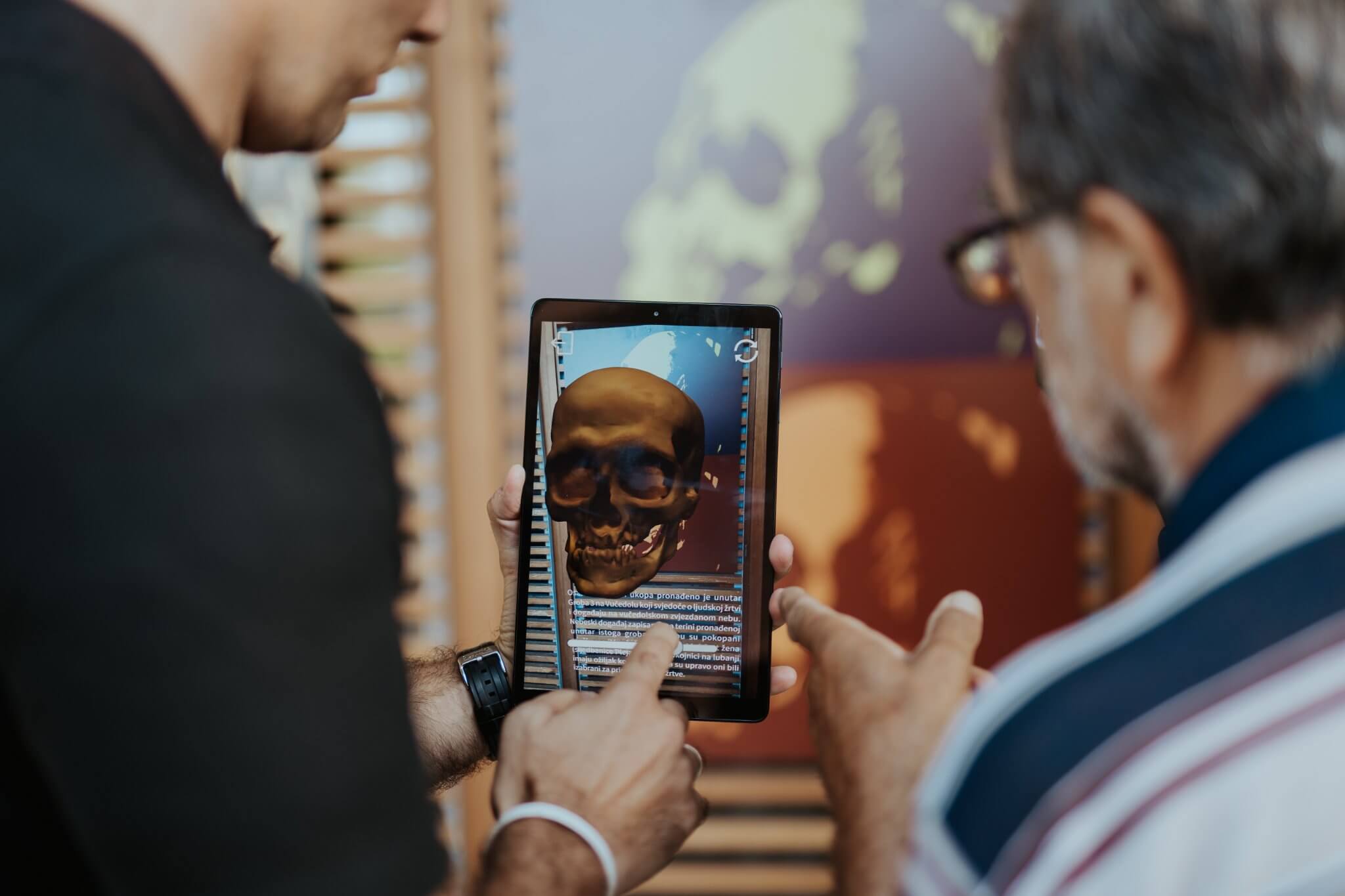
Photo: Vučedol Culture Museum
This marketing expert believes that augmented reality offers museums unimagined opportunities for development and getting closer to citizens of all ages.
“We especially want to get closer to young people and get them interested in everything that the Vučedol Culture Museum offers, and it offers many things that define today's life and reality”, concludes Darko Bilandžić.
Darko is a marketing expert who has a passion for a reality that is virtual, augmented, or extended. If you would like to know more about that, make sure to check out TCN’s interview with Darko on Culex, a successful VR company that he co-owns.
For more on lifestyle in Croatia, check out our dedicated lifestyle section.
Madonna With Child Painting Becomes Permanent Property Of MUO
ZAGREB, 14 July 2022 - The director of the Museum of Arts and Crafts (MUO), Miroslav Gašparović, and art collector Dinko Podrug, on Thursday signed a donation agreement for the Madonna and Child painting, transferring the ownership of the masterpiece by Croatian-Italian master Andrija Medulić Schiavone to the MUO.
During the signing ceremony, Gašparović thanked Croatian American Podrug, an art collector and psychiatrist from New York, for this extremely important initiative for Croatian cultural and art history, "which shows the connection between Croatian culture and Croats all over the world."
He said that this masterpiece by the great late Renaissance painter Andrija Medulić, a native of Zadar who emigrated to Venice, represents a "great qualitative shift and gain" for MUO, the city of Zagreb and Croatia.
"Croatia has not had this category and quality of painting until now. With this donation agreement, Croatia is receiving a work of one of the most important painters of the 16th century, who was the link between Titian and Tintoretto and in a way introduced Mannerism to Venetian painting," said Gašparović.
The story of the Madonna and Child painting with the MUO began in 2017 when it was included in its permanent exhibition through the good offices of Dinko Podrug.
He signed the donation agreement on behalf of the National Federation of Cultural Foundations of Croatian Americans (NFCAFC), headed by Steve Rukavina, after he bought it at the Sotheby's auction house a few years ago .
After receiving a thank you note from Gašparović, Podrug said he immediately realised that, instead of his living room, a better place for the painting would be in a Croatian museum. He originally planned to donate the painting as a gift, but then he decided, with the help of NFCAFC, to establish a mechanism through which other American citizens could also donate paintings to Croatia and obtain a tax deduction for this in the USA. Currently, about a dozen pictures have been donated to that programme, he said.
Gašparović commended this stimulating mechanism and expressed the hope that in the future it will enable similar donations to other Croatian cultural institutions.
He said that this donation is only the first step that heralds a new era for the MUO, which was temporarily closed due to reconstruction after the earthquake and its exhibitions were dislocated. He announced a donation from the Urban family, the mother of photographer Pavo Urban, already for September and a donation from the architects Penezić and Rogin.
"The MUO's holdings will continue to grow, and the museum will remain alive, this is in a way the symbolic beginning of a new era for the MUO," said the director.
The partner of the event is the Croatian Heritage Foundation.
Sabor Adopts Law on Cultural Councils and Financing Public Needs in Culture
ZAGREB, 8 July 2022 - The Sabor adopted the Law on Cultural Councils and Financing Public Needs in Culture on Friday by a majority vote.
The law regulates the financing of public needs in culture, the allocation of premises for cultural and artistic activities, the establishment and role of cultural councils and the work of the national council for culture, as well as the issue of decision-making on financial resources.
The law is aimed at improving, simplifying and organising the system more efficiently and enabling multi-annual financing.
Ahead of the vote, Miroslav Škoro (For a Just Croatia) reiterated that the law will not help the "disastrous" state of culture in Croatia. He claimed that law gives "pharaonic powers" to the minister, and enables mayors and county prefects to allocate premises through direct agreement, creating an "army of culture addicts."
The Sabor also adopted three laws on the implementation of EU regulations, on the fight against the spread of terrorist content on the Internet, on the jurisdiction, recognition and enforcement of decisions in matrimonial disputes and in matters related to parental responsibility, and on international child abduction.
An amendment to the law on the implementation of the regulation on genetically modified food and animal fodder and the traceability and labelling of genetically modified organisms was also adopted.
Two laws in the agriculture sector were also adopted, on plant health and food hygiene and microbiological criteria for food.
Portuguese Ceramic Tiles Exhibition Opens In Rijeka
ZAGREB, 30 June 2022 - An exhibition called "Azulejo - the Art of Portuguese Ceramic Tiles" was opened at the Maritime and History Museum of the Croatian Littoral in Rijeka on Wednesday.
The exhibition was organised in cooperation with the Zagreb Museum of Arts and Crafts and the support of the Croatian Foreign Ministry, which donated the exhibits to the Zagreb museum in 2015.
The exhibition shows products of Lisbon workshops from the first half of the 18th century on 11 display boards containing compositions of blue-white, glazed and painted ceramic tiles which have become a distinctive symbol of Portuguese culture and tradition.
Portuguese Ambassador to Croatia Maria Paula Vieira Leal Da Silva attended the opening.
The exhibition can be seen until 6 September.
For more, check out our lifestyle section.
Zagreb Through the Eyes of a Sixteen Year Old Expat
June 25, 2022 - Zagreb, Croatia’s prized northwestern capital, has gained quite the attention recently – with its captivating architecture and an abundant amount of summer activities. But is it exciting to live in for teenagers? Does it truly have a lot to offer to the vast number of youthful souls living there? Find out in the first of a new TCN series - Zagreb Through the Eyes of a Sixteen-Year-Old Expat. Prepare yourself for the culture that I have experienced as an expat living in Croatia’s most important transport hub! In today’s episode, meet the art culture of Zagreb.
From charming scenery to a distinguishable amount of greenery, offbeat entertainment, and a low crime rate, Zagreb has grown detrimentally on me during the single year I spent here (with one more to conquer before leaving for university). Nothing about this city seemed appealing to me when my parents unexpectedly told me that, in the next few weeks, we are moving abroad for their work.
Leaving my close ones. Having to carve out a new social life. Finding a new school. It was all out of my comfort zone – which I very rarely challenge. I was not prepared to be thrown into an entirely unfamiliar community but found comfort in the fact that no one ever is. And so, with time I found myself falling in love with the medieval “old city” with contemporary Croatian culture and art.
Although Zagreb’s established reputation as a destination of culture, music, and art becomes notorious throughout the summertime, it still exudes everything it has to offer on a day-to-day basis – no matter the season. During my time here I have noticed several events provided by the city to its citizens, such as the Advent, the festival of lights, and several museums hosting gatherings for art enthusiasts. With smiling faces all around you, excited laughs from children running by, and an intoxicating atmosphere spreading with each passing second, Zagreb knows how to bring people together and have them share a memorable experience with one another.
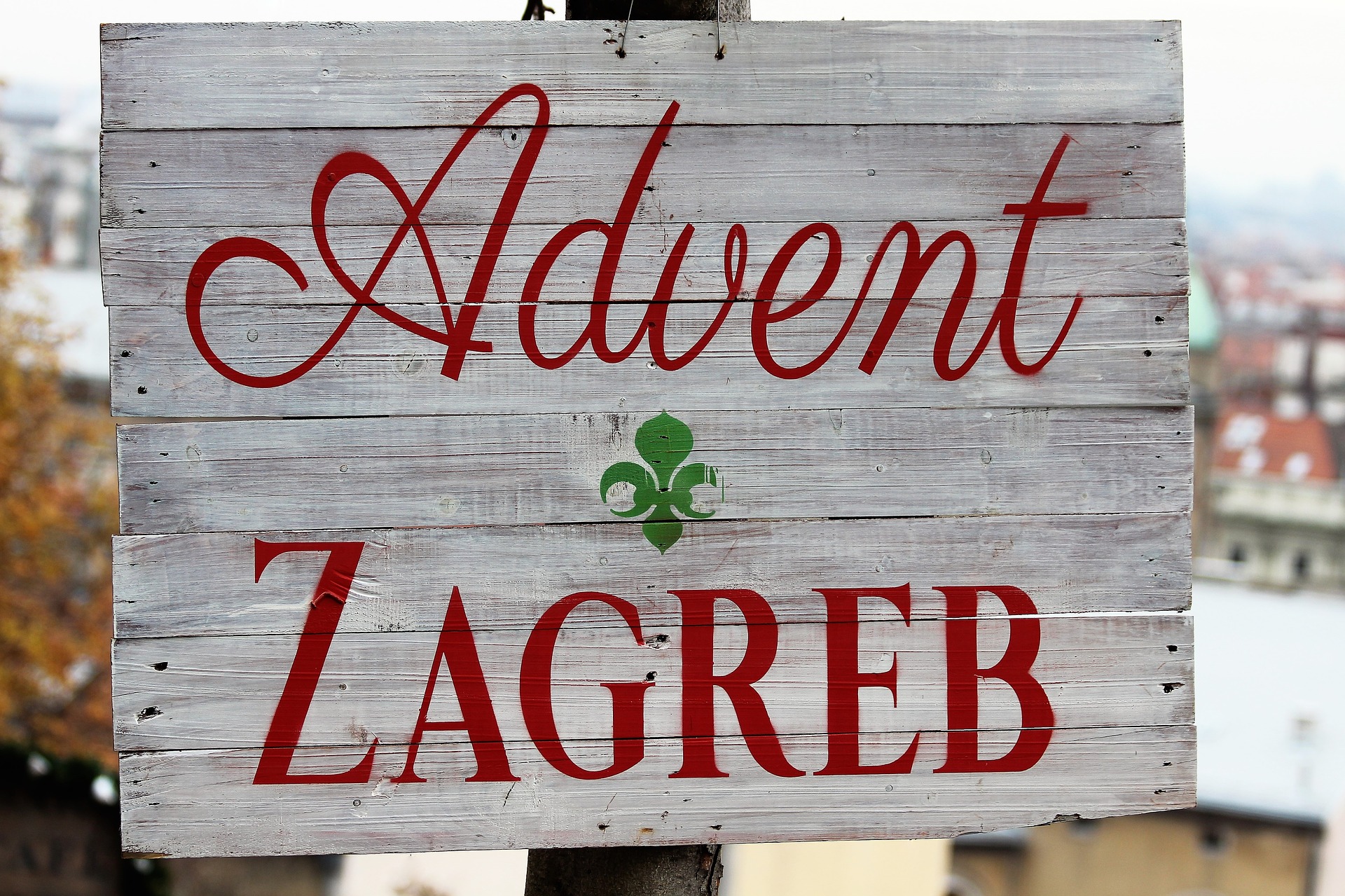 Moreover, the city’s combination of modern pleasure with historic architecture seems to divulge contrasts unlike anything else. For example, the Croatian National Theatre (1895) has shown generations of artists showcasing contemporary beauty on multiple occasions – bringing entertainment to all age groups living in the city of Zagreb. Additionally, the National Museum of Modern Art and the Ethnographic Museum of Zagreb both interpret and spread numerous museum activities aimed to promote the culture of the past and present.
Moreover, the city’s combination of modern pleasure with historic architecture seems to divulge contrasts unlike anything else. For example, the Croatian National Theatre (1895) has shown generations of artists showcasing contemporary beauty on multiple occasions – bringing entertainment to all age groups living in the city of Zagreb. Additionally, the National Museum of Modern Art and the Ethnographic Museum of Zagreb both interpret and spread numerous museum activities aimed to promote the culture of the past and present.
Overall, I believe the diverse experience provided by Croatia’s cultural centre nurtures and promotes art in all kinds of forms. It encourages us citizens to discover various talents and institutions that mirror how culturally rich the city is. From my experience, all the events seem to grant a large number of locals and visitors the ability to view such creations from various open spaces – providing a level of fulfilment to all who attend!
Do not miss out on the opportunity to discover the city’s distinct personality by finding out more about the art culture it is exceptionally known for and the enviable summer programme that has recently started.
For more, check out our lifestyle section.
48 Hours in Osijek: Slavonian Pot of Content
30th of April 2022 - Green City, Lega City, Bike City, a City on Drava River... Osijek has earned a lot of names through the years and today is one of the most contemporary places in Croatia. A look into how you can spend 48 hours in Osijek.
In recent years, TCN wrote on multiple occasions about how the city of Osijek has every characteristic of a modern European town - culture, history, recreation, developed IT sector, student city with a lot of youth, enormous potential, and so on. Furthermore, the tourist offer became so diverse in the last few years that Osijek became a city for everyone.
For this list, we decided to split time frames into two sections: day one, which would be reserved for relaxing exploration of the city, and day two, for more recreational and exciting options. Now, without further ado, let’s start our 48 hours in Osijek guide!
9.00 a.m - 10.30 a.m
Every good day needs to start with a good breakfast and what is better than Restaurant Waldinger’s cuisine? Very few. Cozy ambient, calm atmosphere, great food, and the beautiful Osijek Co-cathedral of St Peter and St Paul just down the street with breakfast that stems from Slavonian and traditional to modern and worldly. For day one, we definitely suggest Waldinger.
Day two can start with something stronger - food on a stick. Fast food and street food restaurant Hokus Pokus is located just down the street from the previous selection and serves everything from breakfast to dinner. Meaty products aren’t the only food available - veggie options are also proudly displayed in this urban restaurant. Tortillas, kebabs, ćevapčići, and tasty salads are truly a good start for an active day in Osijek.
11.00 a.m. - 1.00 p.m.
Day one can be spent in various ways - just stroll through the city on foot and visit numerous green parks like King Petar Krešimir the Fourth Park that’s surrounded on all four sides by beautiful maple trees and King Tomislav Park which connects European Avenue and Tvrđa with its beautiful row of poplars. Since you’re already there, why not use that opportunity and visit, already mentioned, the old town of Osijek, Tvrđa. It’s the best-preserved ensemble of Baroque buildings in Croatia and has a Habsburg star fort built on the right bank of River Drava. Tvrđa also has a culturally rich Museum of Slavonia, that consists of art and heritage stemming from baroque to recent creations.

Tvrđa (photo credit: Mario Romulić)
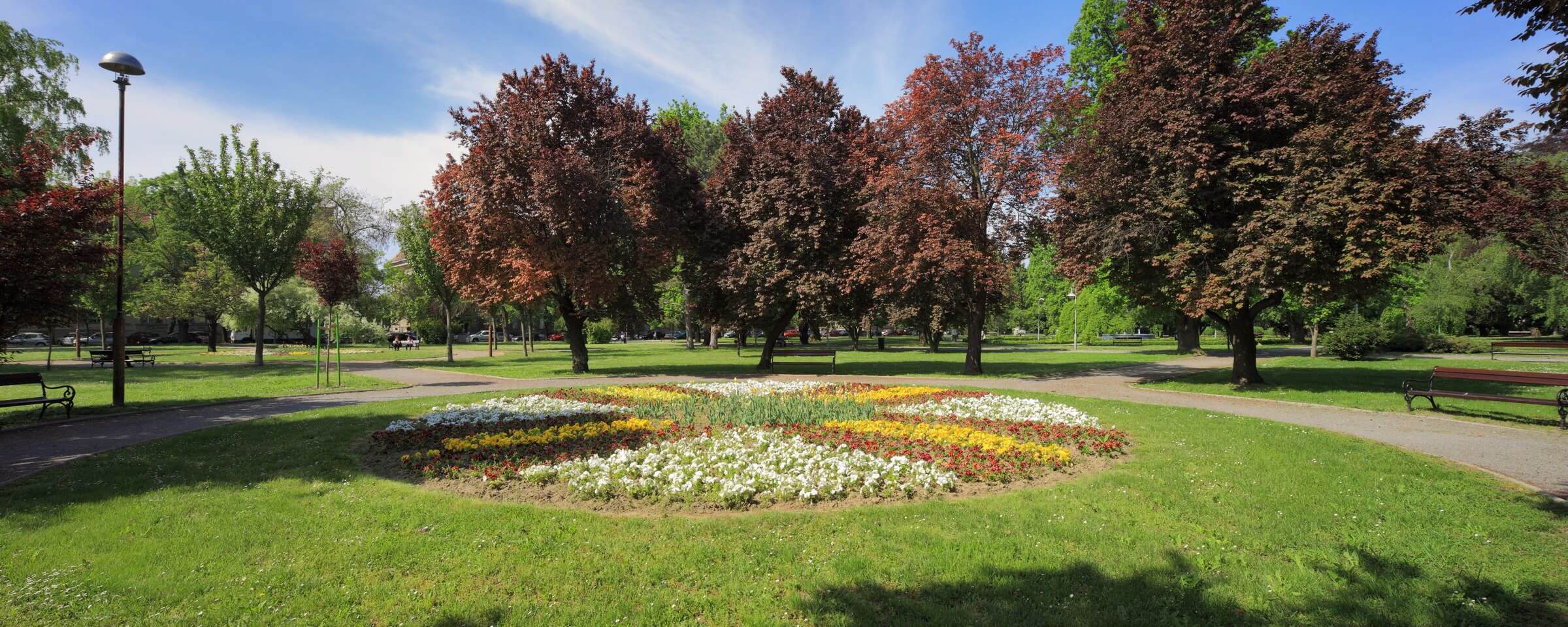
King Petar Krešimir The Fourth Park (photo credit: Mario Romulić)
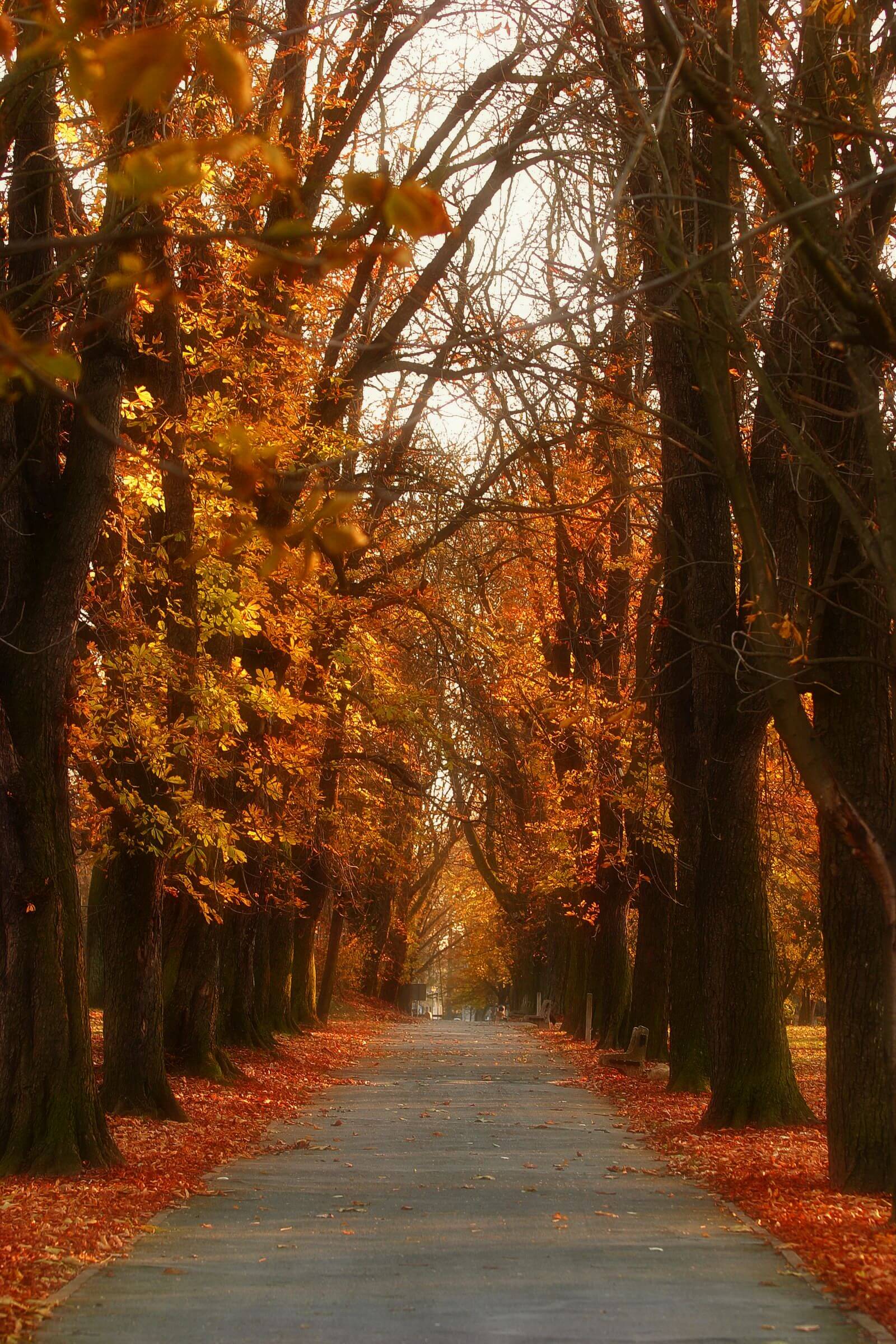
King Tomislav Park (photo credit: Mario Romulić)
After Tvrđa, use that time to sit down and have a cup of coffee - an obligation that’s never skipped in Croatia with the view of the Museum of Slavonia, faculties, schools, and old Churches of Saint Michael and Holy Cross.
The recreationally active day two can be used for biking through the city - Osijek has one of the most developed bike tracks in Croatia so if you’re even a little bit interested in being active while on holiday, biking through Osijek is a must.
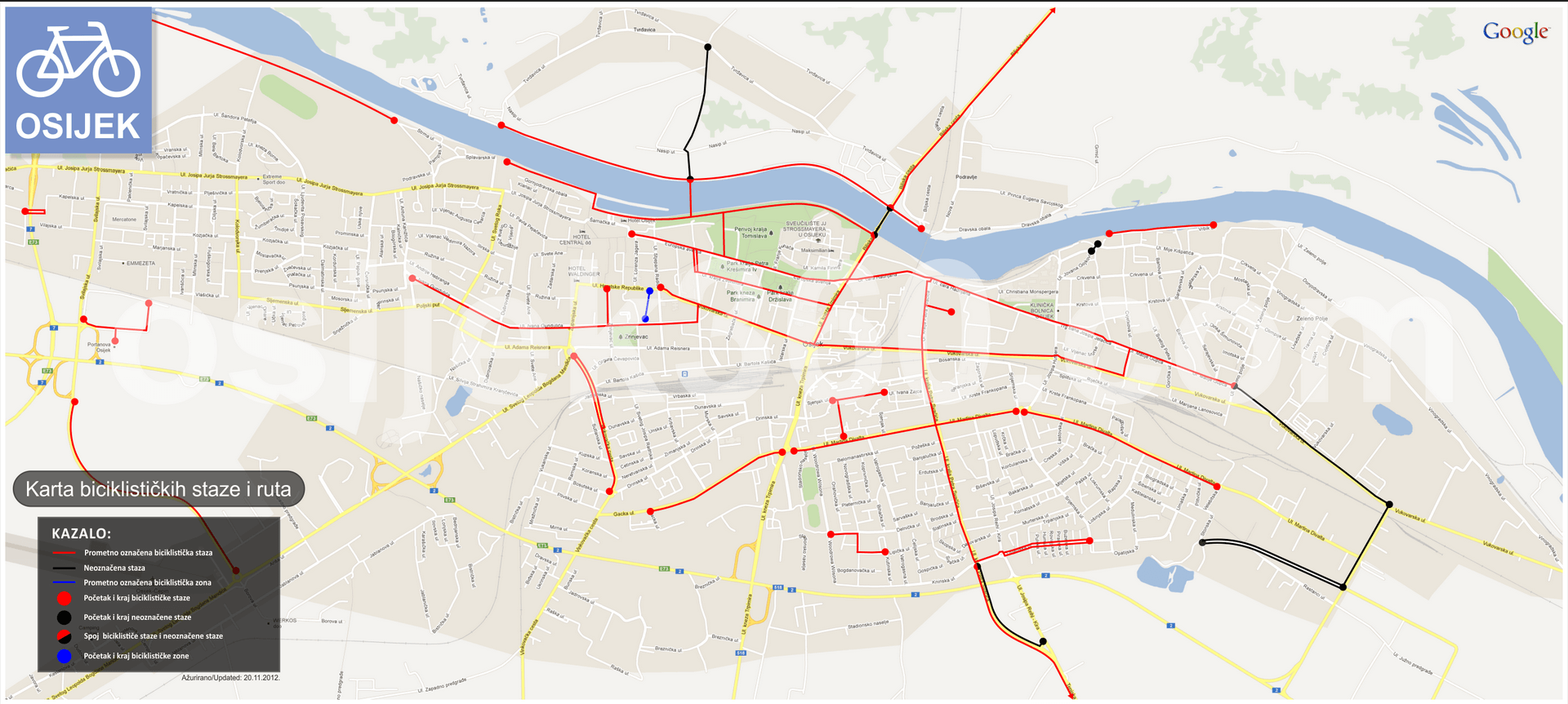
City bike routes (screenshot: www.osijek360.com)
While you're biking, cross River Drava over the popular "Bridge of youth", now symbols of Osijek, or take "kompa" and go to Osijek ZOO. "Kompa" is one of the symbols of Osijek as well - a means of transport powered only by Drava River currents transporting residents of Osijek since 1916. There's another option: take both! You can transport your bikes on "kompa" as well.
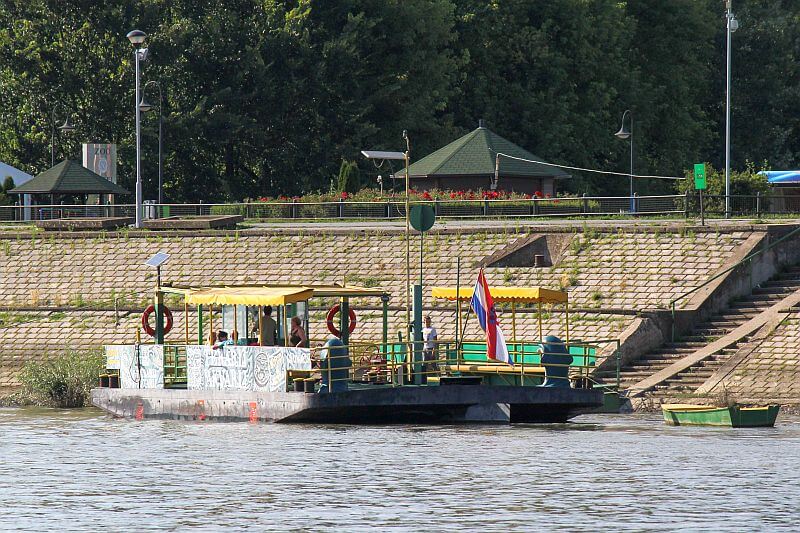
Popular "kompa", faithful "carrier" of Osijek residents since 1916 (photo credit: www.tzosijek.hr)
Osijek ZOO has been founded in 1955 and thanks to the location away from the city noise, it’s the perfect place for the peaceful stay of 80 species of animals. Next to the ZOO, there’s a hotel and catering facility with a children’s playground and a view of River Drava. All of that is near the beautiful Podravina forest.
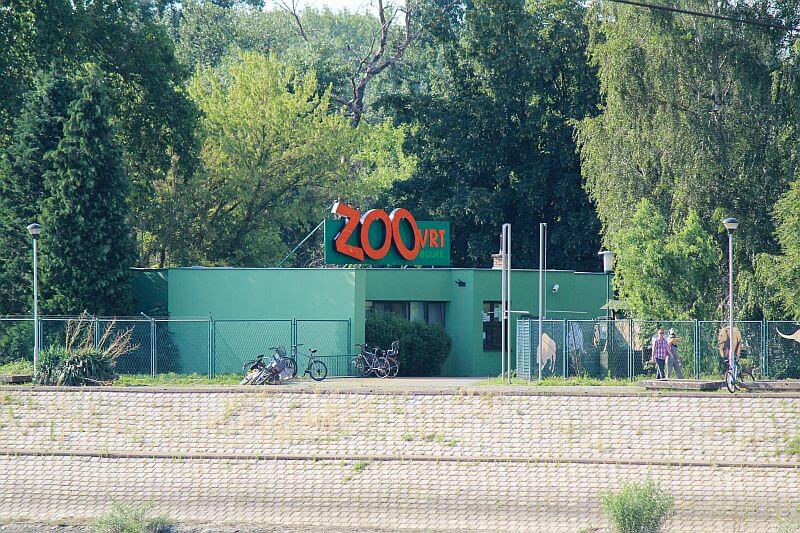
Osijek ZOO (photo credit: www.tzosijek.hr)
2.00 p.m. - 4.00 p.m.
After some sightseeing, day one should surely feature a really good lunch. If you’re near Tvrđa, definitely check out El Paso for traditional Slavonian food and strange location - on a boat on Drava River! Restaurant and pizzeria Strossmayer no.2 is located near Drava River and has already mentioned traditional dishes, however, they have multiple options like dishes from all over Europe, great pizzas and many more, with amazing Slavonian wines like pinot, chardonnay, merlot and graševina.
Options outside Tvrđa are located near the center of Osijek and its Downtown like restaurants Zeleni Val and Makedonka which are battling for the title of best čevapćići in Osijek. It’s for you to decide, Slavonians are still discussing. All of that soaked with the famous black Radler from Osječko? Name us a better combination.
More active day two requires a healthy amount of heavy food (which is a blatant oxymoron) so why not visit pubs which are definitely not lacking in Osijek. Rich beer culture always comes with pub food that can only be found in Croatia. So why not try local beer brews like American Pale Ale, Irish Dry Stout, and Czech Pilsner from Beckers Craft Brewery with homemade hamburgers that make you salivate? Few options are available: Merlon Pub located in the heart of Tvrđa, there is American Bar Dollar in the center of Osijek, and many more.
5.00 p.m. - 7.00 p.m.
After stuffing yourselves with Osijek cuisine, your 48 hours in Osijek can't pass without more sightseeing and why not use that time to visit famous European Avenue. At the beginning of the century, Osijek was the “stage” for European trends in architecture and the biggest trace left Art Nouveau. Walking on the Avenue, you’ll witness magnificent urban villas from that time with the Main Post Office and Urania Cinema, which is one of the oldest working cinemas in Croatia. On the way, visit Sakuntala Park - a specific park that has a sphinx at the entrance. Strange, isn’t it?

Museum of Fine Arts Osijek located on European Avenue (screenshot: www.mlu.hr)

Art Nouveau villa at European Avenue in Osijek (photo credit: Mario Romulić)

Cinema Urania (photo credit: wikiwand.com/Arhitektura_secesije_u_Osijeku)
On the way, you have already mentioned the beautiful Osijek Co-cathedral of St Peter and St Paul which is an ultimate symbol of Osijek. One of the most important people in Croatian culture, Osijek native and icon, Josip Juraj Strossmayer, gave the initiative to build this magnificent neo-gothic building in the 19th century that still stands tall even today. Besides Zagreb Cathedral, Osijek Co-cathedral is the tallest one in Croatia - its grandiose appearance and ethereal atmosphere bring you back to past forgotten times.

Osijek Co-cathedral of St Peter and St Paul (photo credit: Mario Romulić)
The active second day can be continued with biking near the Drava River, Podravina forests that astonish with its greenery, and used for refreshment on the famous Osijek beach on Drava River Copacabana or how locals call it, “Kopika”. This famous beach went through multiple renovations in recent years and today offers various options for relaxation and hanging out with your friends. If you’re up to it, get rid of your bikes and put on your swimsuits because this feature in our 48 hours in Osijek guide, is most certainly a must.
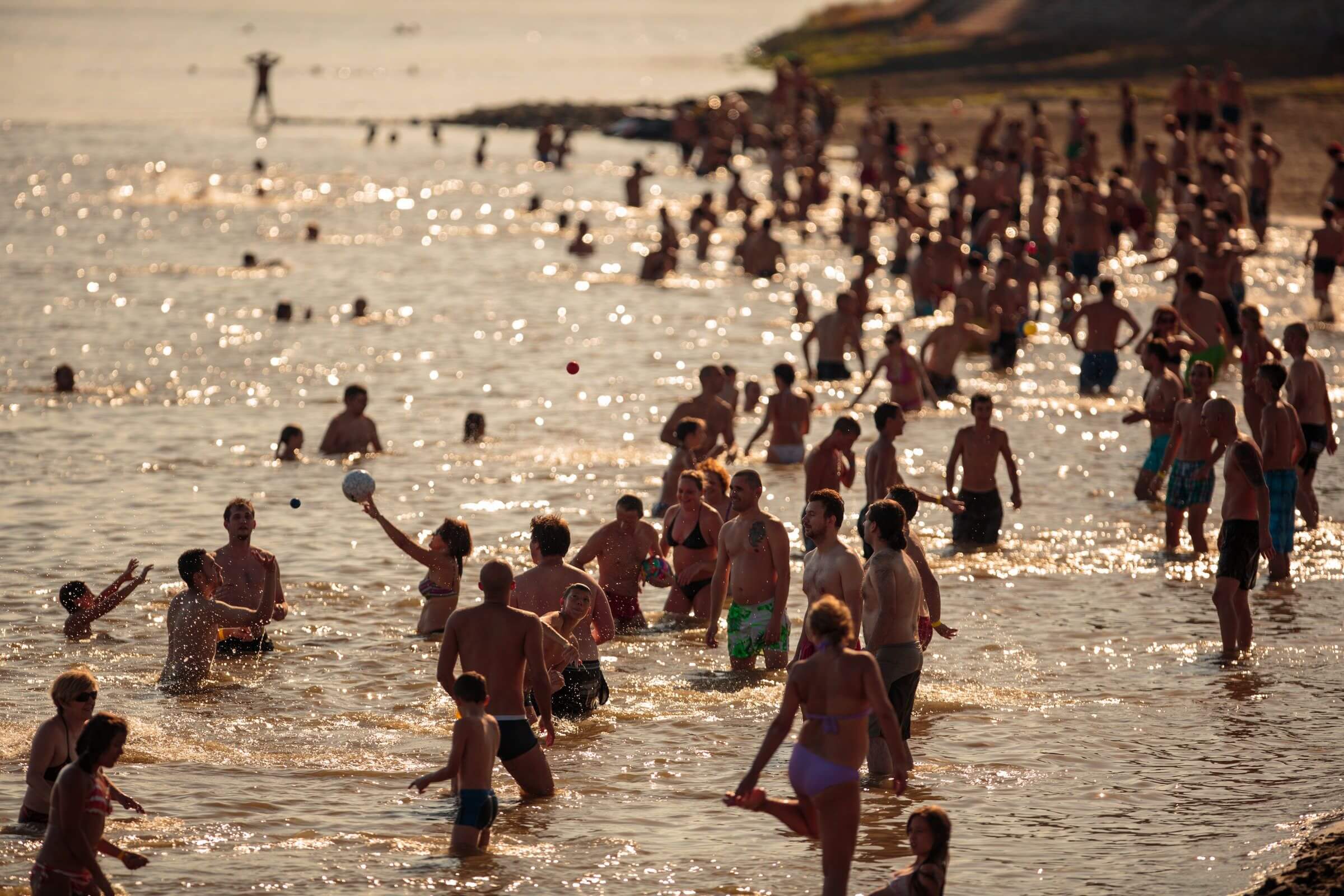
Famous Kopika (photo credit: Mario Romulić)
8.00 p.m. - onwards
After refreshments, it’s time to explore the nightlife in Osijek. This section is for both days in one since options are plentiful and, in most cases, you won’t make a mistake. However, these are the most famous ones that can make any list in Croatia. Definitely visit Radić Street which is teeming with pubs of all kinds and some of them are named after famous European cities - Barcelona and Amsterdam. In the recent past, there were New York and London but unfortunately, they haven’t survived. Even with those two gone, Barcelona and Amsterdam are still the ultimate picks if you want to see where the urban youth of Osijek and other parts of Slavonia love to go. Also, pub quizzes are amazing.
For drink/cocktail connoisseurs we recommend The Craft Room. The Craft Room bar is located right in the center of the town of Osijek. This concept bar is unique in this region because they offer a wide range of Gin and Whiskey from all over the world. Creative cocktails with innovative ingredients and award-winning bartender Miroslav Kljajić make this bar an unavoidable place to visit.
Beer lovers, do not fret! Gajba, a pub and tasting room, has every beer you want. From pale ales, lagers and so many other homegrown and worldly types of beers, this place is heaven for people who want to explore beer culture, not just of Osijek, but any European brew. If you want to visit soon, come just in time for the Craft Beer Festival that’s organized by, you guessed it, Gajba Pub.
If you think that’s all, it isn’t. Real nightlife is located in Tvrđa, where multiple nightclubs like Memories, Q Club, and more attract youth from Osijek and beyond. Foreign and domestic music “strikes” in all directions but one is an odd one out. If you want to hear Croatian live music tamburitza, go to Fort Pub - the Slavonian atmosphere and excited people make this place even better.
The end of the 48 hours of Osijek is almost done but not before leaving you visit Gold by Waldinger and Slatka Tvornica for some Slavonian sweetness - krempita, cakes, traditional Slavonian sweets, and a cup of coffee with travarica on the side? You can't go wrong.
We will end it here. This is our 48 hours in Osijek and hopefully, this guide will encourage you to come to visit Osijek, the heart of Slavonia. We deliberately left out nature park Kopački rit and the Baranja region because we wanted to emphasize how the city itself has so many things to offer. Still, that doesn't mean you shouldn't visit Baranja and the nature park because, at the end of the day, everything's connected. When talking about Osijek or Slavonia, people always say that the city or the region is underrated. I truly think it's not. What makes this area so beautiful and attractive to visitors is that people are not burdened by unrealistic expectations: we will never have tourist offers like Dubrovnik, Dalmatia, and Istria or the beautiful Adriatic Sea. We know our worth and that's why most of the time tourist goes home with a smile on their face. Charm, humility, and accepting people with open arms are our best tools. That's why Osijek is not underrated - it's properly rated.
Interested in bike tours of Slavonia? Check this article.
For more on travel in Croatia, follow TCN's dedicated page.
Contents of a Slavonian Easter Basket: From Eggs to Green Onions
15th of April 2022 - The most important Christian holiday is almost here which means plenty of food and traditions that have been part of Croatian culture for centuries are in focus. A look at the contents of a Slavonian Easter basket.
With Lent being over on Palm Sunday, Holy Week and the final days before Easter have begun. Of course, that means believers who participated in relinquishing and fasting during Lent can finally start eating normally, except on Good Friday when fasting is strictly prescribed. Preparations for Easter include a lot of cooking and preparing sweet pastries to celebrate Jesus’s resurrection. Good Thursday is dedicated to the remembrance of Christ’s Last dinner and no one can work on their soils or crops. As already mentioned, Good Friday includes a strict fast with only one proper meal allowed, which symbolizes Jesus’s torment and death. After Good Friday, Good Saturday is reserved for silence and preparations of said meals that have everything from heavy meat to spring vegetables and more. However, the most important part of the Easter celebration is definitely an Easter basket, which contains a variety of foods reserved for blessing and later for Easter celebration, most commonly as a breakfast on Easter itself.
Easter Eggs
Most things in the basket are definitely Easter eggs (pisanice), or boiled chicken eggs with beautiful handmade designs that differ from family to family. This custom of decorating and gifting eggs was known throughout Europe, especially among Germans, Scandinavians, and Slavs. Even its age is confirmed by archeological grave finds. When it comes to Christianity, the egg is a symbol of the new and eternal life that Jesus made possible for people through the resurrection. In Croatian traditional culture, the custom has remained to this day. In the past, only domestic homemade colors were used for painting eggs and they were obtained from broccoli, onion peel, nettle, various grasses, and many more. Aniline dyes became popular much later. Wax was applied to the egg by a special funnel-shaped pen or pinhead; this technique also made it possible to obtain multicolored ornament. These traditional ways of painting Easter eggs came back - more and more people fall back to old customs because of healthy and more organic ways of painting. On Easter morning, eggs are put to use - children break eggs to determine who has the strongest one.
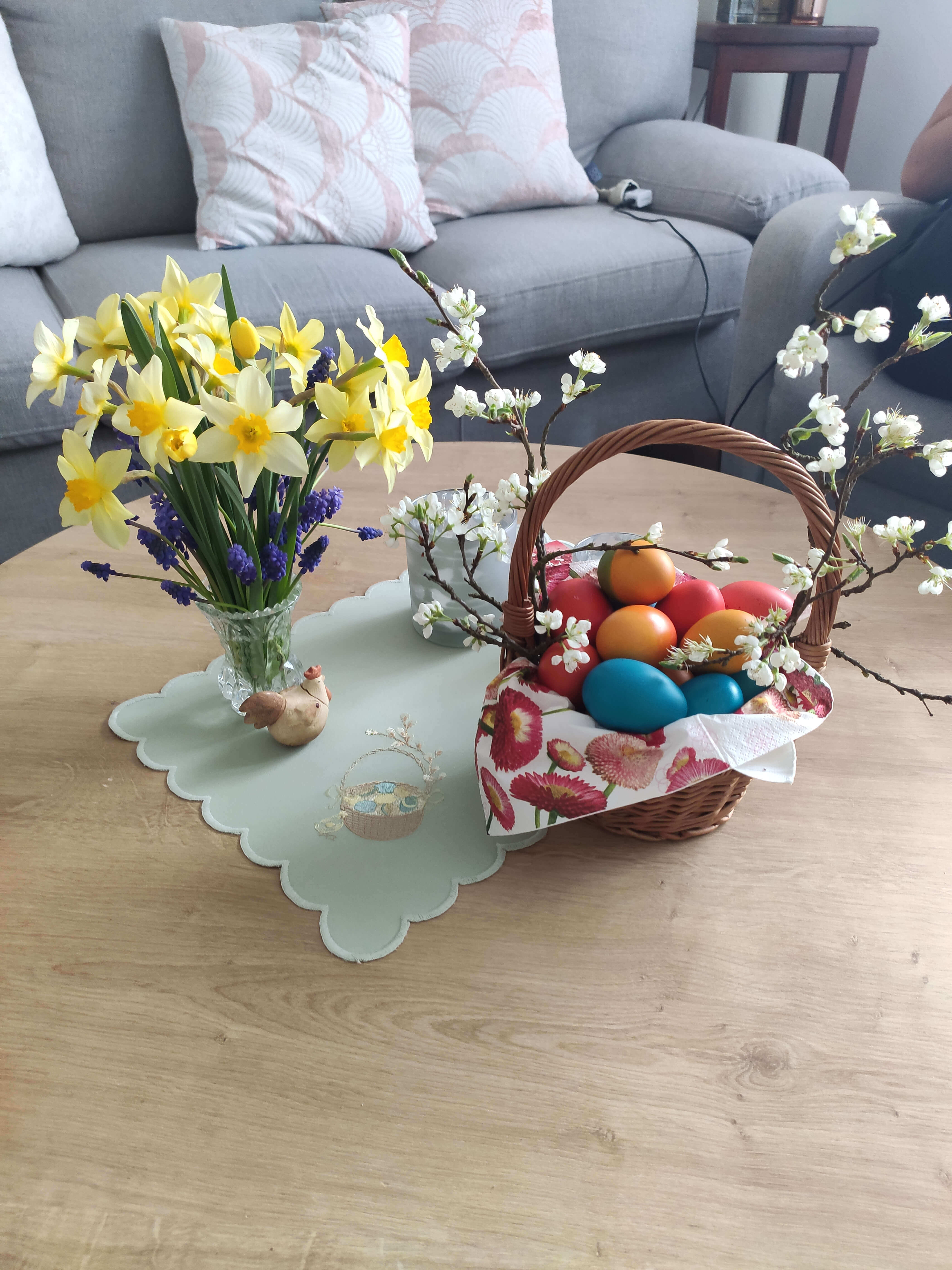
Colored Easter eggs and spring flowers on Easter (photo credit: Private album)
Unleavened bread
As we know a lot of Christian traditions are shared with Jewish customs and unleavened bread is part of that as well. It symbolizes Christ’s body and according to Bible, was present at Christ’s Last dinner. There are a lot of variations of bread throughout Croatia like normal pogača, pinca, however, unleavened bread is a customary Easter bread in Slavonia and represents sacrifice. Its texture is somewhere between hard and soft and has a neutral flavor which fits amazingly well with other Easter basket components.
If you’re interested in making this bread, here is my family’s recipe that’s been used every Easter for decades:
0,5 kg of smooth flour
1 package of baking powder
1 teaspoon of salt
4 egg yolks
1 egg
1 tablespoon of pork lard
10 dag of butter
Method:
Mix with milk so that it is neither soft nor hard. Let it sit for 10 minutes, after that put it in a small bowl with a diameter of 18 cm. Grease the bread really well with lard and put the bread in the oven preheated to 180°C. Bake it for 30 minutes, take it out, coat it with egg yolk and milk mixture using a brush, put it back in the oven, reduce the temperature to 150°C and bake it for 25 minutes more.
There you go! You have a proper Slavonian bread that’s part of every Easter basket.

Easter breakfast with food from Easter basket (photo credit: Private album)
Ham
Fragrant-cooked ham is certainly the main star of the Easter table and what evaluates the quality of its preparation is juiciness. The type of meat is really important but the best is definitely pork meat or rather pork leg which is considered the “real” ham. Other than classic cooked ham that we know and love, there is an alternative - ham wrapped in pastry. Again, its preparation varies from family to family and the quality of the meat is determined by the financial status of the people who prepare it.
If you’re interested in the preparation of cooked Easter ham, check this recipe here.
Radish
The so-called spring queen of health and a vitamin bomb. Although radish is primarily associated with the Easter table, many people buy this vegetable because of its rich nutritional composition and medicinal properties. Indispensable food of every Slavonian Easter basket.
Green onion
If it's planted before Spring, green or young onions are definitely an unavoidable vegetable for the Easter basket. Strong, spicy, and its intensive smell with ham bring something really special to every Slavonian household on Easter. Like radish, it is a great ingredient in a variety of Easter salads.
Sweet cakes and pastries
Last but not least, cakes and pastries are a must in every Slavonian Easter basket. From usual pies like cakes like mađarica, chocolate pie, white pie, honey pie, so-called Katherine (Katarina kolač), and coconut-walnut cubes that were and still are a staple for Slavonian desserts through decades, small cakes, pastries, and cookies are getting more and more popular in recent years. Likes of išleri, baskets (košarice), rum balls, linzers, triangles and so many more. Cherry or apricot strudel is also a recent pastry baked and consumed on Easter. Breskvice (peaches) as well - signature Slavonian cake.
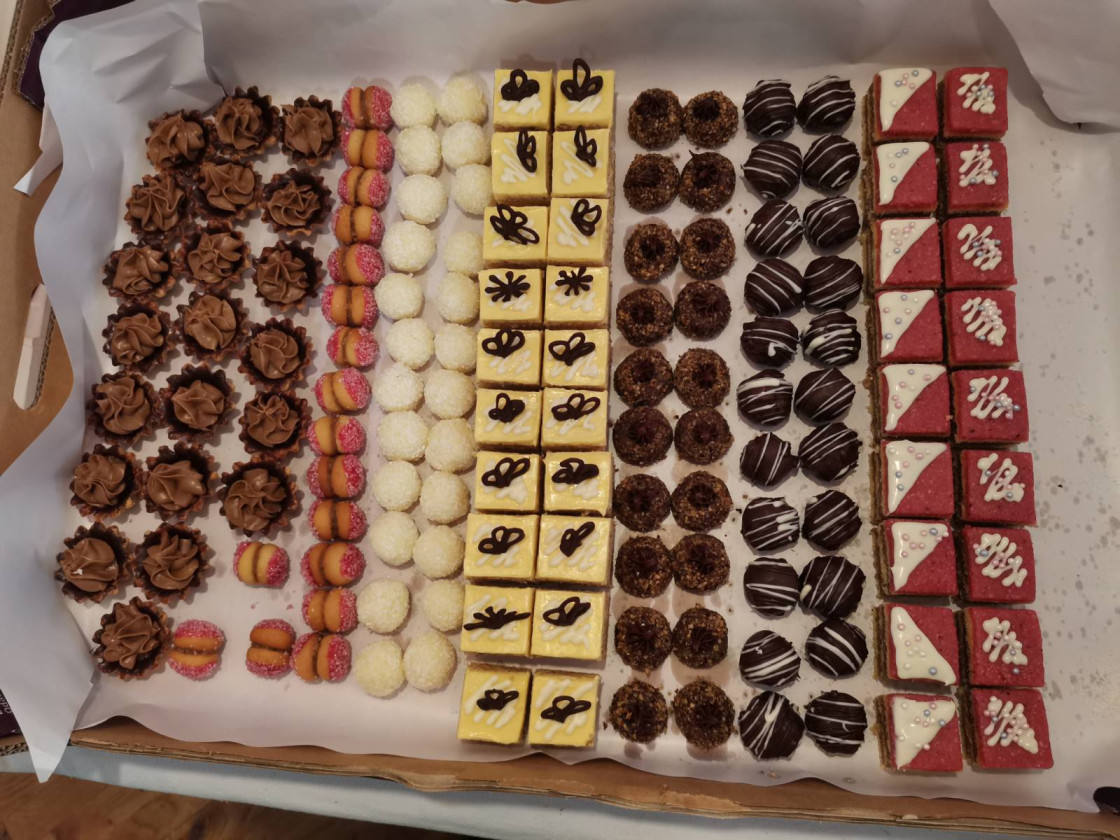
Sweet cakes and popular pies in Slavonia (photo credit: Private album)
Salt is also part of the blessed Easter basket with candles that will be lit on Easter breakfast and other various items that believers want to bless.
As said in the beginning, Easter is the most important Christian holiday. It celebrates Christ’s sacrifice and resurrection. Throughout the centuries, Croatians managed to save huge parts of their cultural and traditional heritage and it’s not a coincidence that Easter customs are one of the oldest traditional practices in Croatia’s history. It doesn’t matter if you’re not a believer, everyone is welcome to try the contents of a Slavonian Easter basket, take it, and in the end, try to make these delicious meals for themselves. At the end of the day, this is the time, not just for sacrifice, but for sharing and love as well.
Sretan Uskrs!
For more about lifestyle in Croatia, visit our dedicated TCN page.


